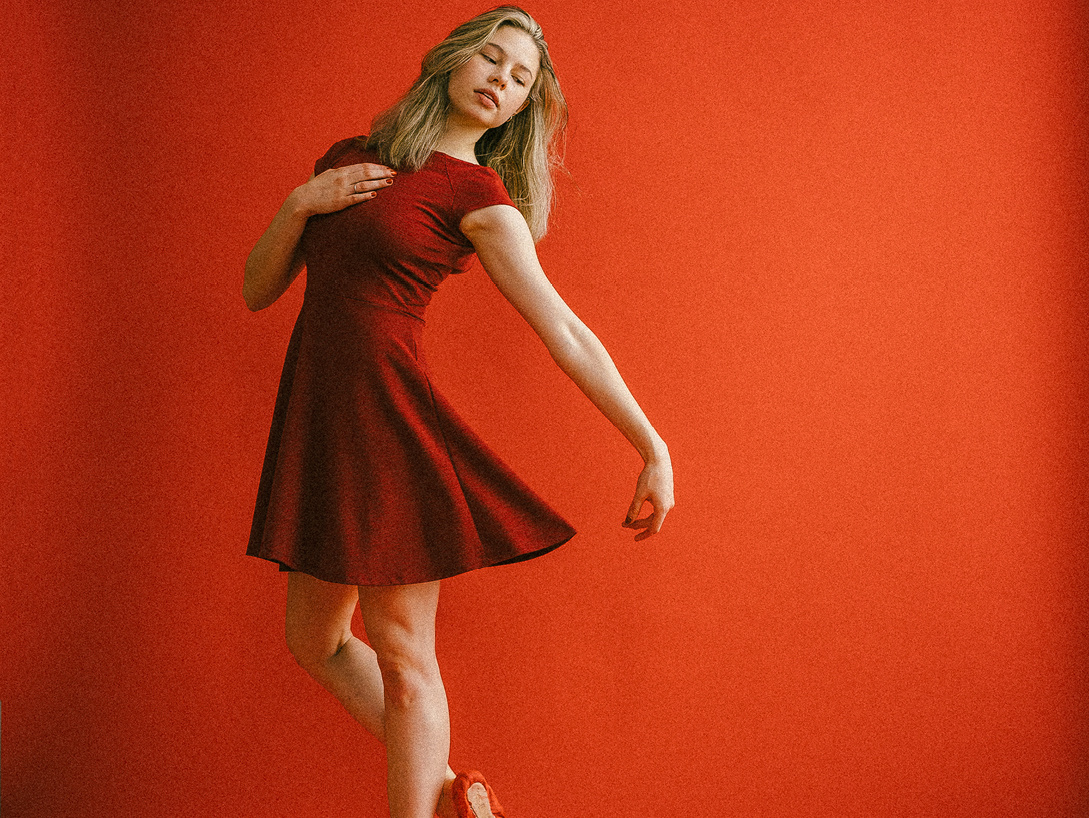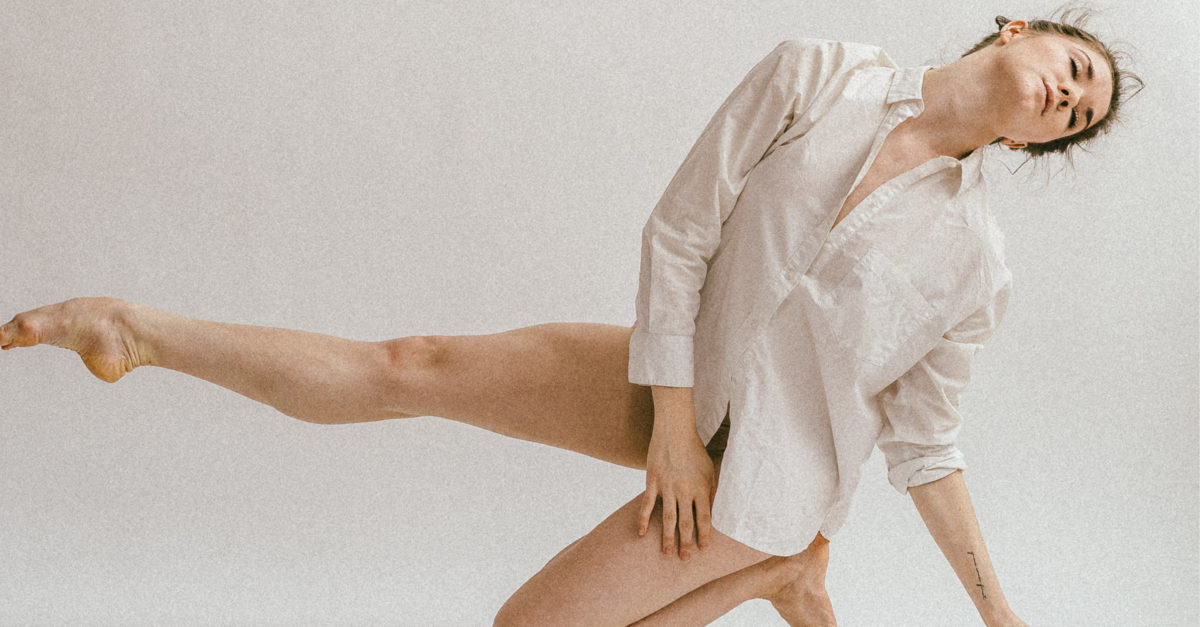Focus on James Jin
New York City-based photographer James Jin is as skilled in the art of communication as he is with the camera. Jin stresses the importance of creating a judgment-free space for dancers to step out of their comfort zone and experiment with expressions and poses to truly make an image come alive.

What was your initial exposure to photography?
I picked up my dad’s old film camera in high school because I thought it would make me look really cool. I don’t know if it did, but I kept taking photos with it. I would take photos of friends and family wherever I went. I really loved catching people off guard. When I started working for the high school newspaper as a photographer, I picked up a digital camera.
When did you go from hobbyist to professional photographer?
I was studying business at Emory University and was inspired to take photos again my senior year. My then-girlfriend/now-wife, Alicia, grew up dancing at a studio in Georgia, so I’d shoot with her old dance friends. After we both graduated (my wife from Oklahoma City University), we moved to New York City to pursue our dream of living as artists in the city.
What is Dancers of New York, and what meaning does it hold for you?
Dancers of New York is the first thing I started when I moved to New York City. When I realized that there were so many other dancers there pursuing their dreams just like Alicia was, I thought it would be a cool idea to collect all those different stories in one place. I would interview dancers at subway stops and photograph them.
It got a lot of traction within a year or two—and that was cool. But more than that, I hope that these stories inspired, comforted, or energized some other person out there who might have been struggling with something similar. I love to hear stories from my friends about their friends talking about DONY. Something that I worked on making an impact on total strangers—that’s special.
DONY used to be my entire body of work, but now it’s an extension of my work—capturing people as honestly as possible. It also used to be very much a planned thing, but now I try to catch people off guard by asking to interview them when they’re least ready.

What intrigues you about photographing dancers?
At first, I just appreciated the aesthetics of dance. It’s a pretty art form. And as I started to photograph more and more dancers, I learned to appreciate the expressions of dance. There’s something really powerful about being able to communicate without using any words.
What does your creative process look like?
My creative process is all about providing a space where dancers can enjoy being a little off-balance. I encourage them to try new things, step out of their comfort zone, and give themselves permission to fail. Once they start to let go of their expectations and fears, their self-expression comes out. I think being honest in your movement is what makes photos dynamic.
Most of the dancers who come into the studio are strangers, but my goal is always to build trust and connection. Over the years, I’ve come to realize that trust is something you earn—you can’t squeeze it out of people. There are a couple of rules I abide by: I always ask dancers for permission to share their photos, and I try my best to take care of them while we’re shooting.
How do you know when you’ve captured something worthwhile? Would you speak about how you view technical perfection?
I am always hoping to capture something honest and vulnerable—basically the qualities that make us human. I think, as a portrait photographer, it’s good to be knowledgeable about cameras, but it’s even more important to be knowledgeable about what it means to share a genuine moment with another human being. With that said, I am not really interested in technical perfection in either photography or dance. I’d much rather choose an image that makes me feel something (even if it’s blurry) over a photo that simply looks pretty and ends there.
Your poses are often not the typical dancer poses. Is this on purpose?
Certain poses are never really the goal or the purpose of my work. I love to use my camera as a tool that helps people to be more boundless artists, and I think the interesting poses are just by-products of what happens in the studio. I encourage dancers to embrace their intuition and themselves.

What makes photography rewarding for you? What do you hope dancers take away from your sessions?
Photography is rewarding when I am using my camera to make a change I want to see in the world. I want to encourage dancers to take risks, be more vulnerable, and see themselves as artists—not just machines that do exactly what they’re told to do. Art isn’t just something pretty to look at. It’s about making an impact. When I get feedback from dancers about their experience and how it has influenced their artistry, it’s a special thing. I hope that the dancers who work with me take something away from our session and use it to make the change they want to see in the world.
Does your wife weigh in on your sessions? What is it like being married to another creative person?
Alicia definitely helped me out when I first started photographing dancers. I didn’t know a thing about technique, so I’d ask her for advice. It’s been incredible to share this journey with her. We have frequent talks about what we go through as artists, and we have a mutual understanding of what it takes to be in this field.
Did you question your talent through the years? Do you still question it?
Absolutely. I think those questions never go away. I think we all struggle with self-doubt. The frequency has changed, though. When I first started, it was almost a daily struggle. Now it’s more of a semiannual thing.

Do you prefer studio shoots or environmental shoots?
I love studio shoots because they make it easier to take off the masks and armor that we have on. The fewer sets of eyes on you, the easier it is to be real and be human. Outdoor spaces are great in that other people, objects, and structures in the space can give you inspiration. For what I am interested in now, I prefer studio sessions.
How would you describe your personality and work ethic?
I am pretty easygoing with an offbeat sense of humor. I like to follow my own curiosity, and that’s what primarily drives my work ethic. I am always working on doing better and becoming the person I want to be.
What’s a little-known fun fact about you?
About once a day, one line from a song will get stuck in my head, and I will sing it all day. Just that one line. I don’t know how Alicia puts up with it. Sometimes I even annoy myself.
What does “living the dream” mean to you?
For me, living the dream is the journey of finding sustainability in your art, making the change you want to see, feeling fulfilled, and paying your bills all at the same time. I don’t know if we ever strike the perfect balance, but I am certainly trying my best to maintain that balance. I am very grateful to be able to do what I love with the people I love.
For more info, visit jamesjinimages.com






















